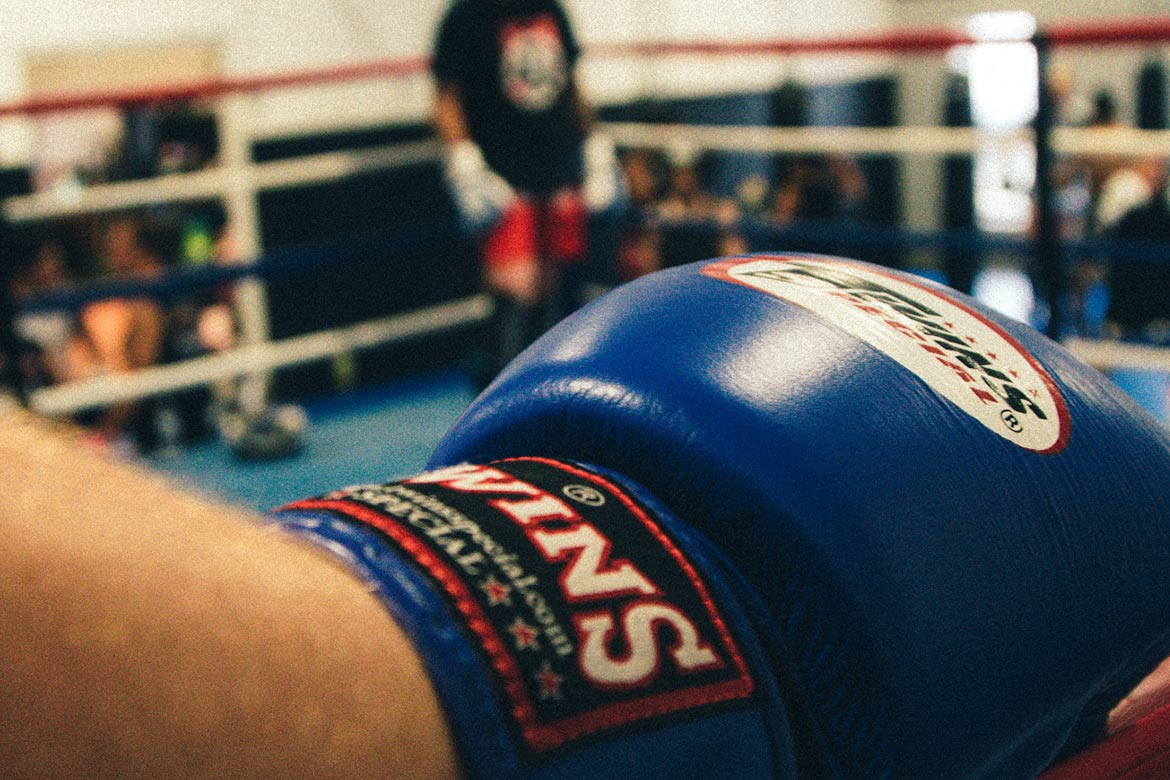Circuit training is a format that allows boxers to condition themselves physically and also focus on specific skills. With circuits, boxers can work on developing endurance, speed or power and also combining several exercises to cover all of the skills in a single circuit for better conditioning.
Using boxing circuit training can be very effective for targeting a range of physical characteristics within a short timeframe. They are also great for learning how to maintain movement under fatigue.
How can you incorporate circuits in your boxing training routine?
You can use circuits in boxing to add extra conditioning to the end of a training session. Also, it is a way to re-introduce athletes to training by gradually building training load when they’ve had some time off. Heavy athletes can benefit from circuits and everyone can save time with them by targeting multiple adaptations. Injured athletes can also train this way while they recover.
By implementing different circuit types, volumes and intensities, you will see how this way of training can not only be a great time-efficient way to train but also it can help develop a boxer’s fitness.
Circuit training for boxing
We have gathered here for you four different circuits for boxing training with different objectives: developing strength, core, conditioning and mobility.
Strength circuits
These training circuits are great for groups, when you have limited time, or when introducing an athlete to training in general. The exercises are mostly basic and the intensity is moderate to avoid making the athletes too sore and to keep high-quality movement going.
Some typical exercises here will include goblet squats, TRX row, press ups and kettlebell swings. This circuit can get athletes up to around 75% maximum heart rate, which is great for preparing them for more intense conditioning work.
Here’s an example of a circuit for strength by Boxing Science:
- Goblet Squats – 10 Reps
- TRX Row – 10 Reps
- Press Ups – 10 Reps
- Prisoner Reverse Lunges – 8 Reps each leg
- Plank Rotations – 8 Reps each side
Between each circuit, there is a 90-seconds rest and you can do from 4 to 5 sets.
Core circuits
As a boxer, you need to develop core strength to be able to deliver good and powerful punches. As we have told you before, punch power starts with the feet, then the energy moves through the core and travels to the shoulders and arms. This is also known as a kinetic chain. If you want to learn more about what parts of the body boxing works, head over here!
When your core is not strong enough to transmit this force, you lose energy and will have a reduced impact force with your punches. Boxing Science says that core muscle mass is highly associated with the punching force. Exercises such as squats and deadlifts with high-weight loads are perfect for achieving a strong core.
Since you cannot target maximum strength all the time because you will get fatigued fast, it is better if you consistently include core circuits at the end of your strength sessions 2 to 4 times per week. Some of the exercises you can do are straight arm sit ups, leg lowers, plank rows and plank rotations.
Conditioning circuits
Conditioning circuits are designed specially for working at the athletes’ maximum heart rate to promote aerobic fitness adaptations. These circuits can be added at the end of boxing sessions or if you are re-introducing yourself to conditioning work if you are too heavy to run at high intensities without risking injury.
Boxing Science has this example conditioning circuit:
- Burpees – 20 seconds on / 10 seconds off x 2
- Running on the spot – 20 seconds on / 10 seconds off x 2
- Mountain Climbers – 20 seconds on / 10 seconds off x 2
- 15-meter shuttle runs – 20 seconds on / 10 seconds off x 2
This completes a 4-minute set with 2-minute resting time in between. Repeat each set 3 or 4 times.
Mobility circuits
Active recovery often includes mobility and movement circuits, which consist of exercises with very low intensity to prevent tightness and dysfunction that sometimes occurs as a consequence of a high boxing training load.
The exercises in mobility circuits allow blood to flow to areas which sometimes are sore and tight and boxers usually feel re-energized afterward.
Here’s an example of a mobility circuit from Boxing Science:
- Shoulder Mobility – Windmills – 10 Reps each side
- Thoracic extensions – Foam Roller – 10 Reps
- Spiderman Rotations – 6 Reps each side
- Banded Hip Flexor Floss – 8 Reps each side
- Squat to Press – 10 Reps
- Lateral Lunge and Rotate – 8 Reps each side
What will you be improving with circuit training in boxing?
Circuit training in boxing will help you acquire more endurance in general. Sports Rec says that “circuit training for endurance can be a simple combination of bag work and running”.
Speed is another thing you will gain if you incorporate circuits to your training in boxing. Improving your speed will give you an edge over your opponent and also advantage.
You will also have more power. Specific circuits for strength and core will help you develop this and condition your muscles to load as much potential energy as possible and release as quickly as you can.

Limitations of circuit training
Circuit training can be very beneficial, as you may have noticed from all of the information we just gave you. However, there are limitations you need to know about as well since circuits are not magical or miraculous.
If you target multiple qualities at the same time you can limit the physiological adaptations targeted. “For example, at high heart rates, we may struggle to lift with enough force and intent to improve strength and speed,” Boxing Science explains on their website.
In addition, boxers who are very fit struggle to get into the red zone, which is when their heart rates are at their maximum. Technique is also something that can get affected in circuits, especially when the person is fatigued, which can create a risk of injury.
Do you use circuit training in your boxing gym? If so, what are the pros and cons you think come with incorporating these exercises into the boxing training routine? Leave your comments below!





